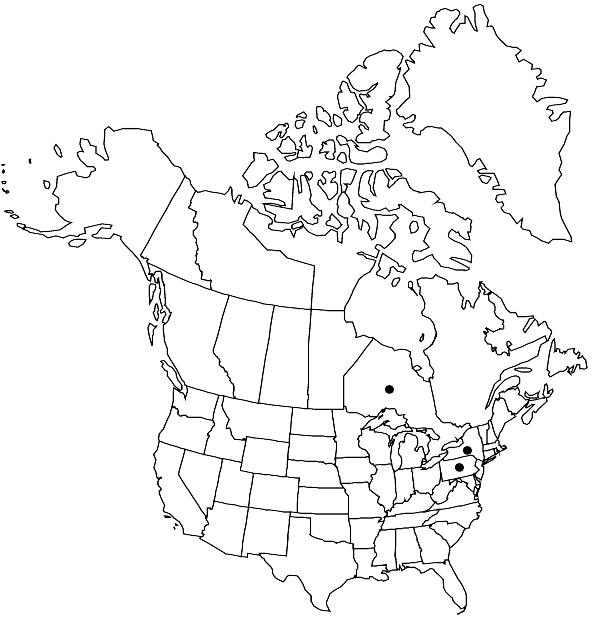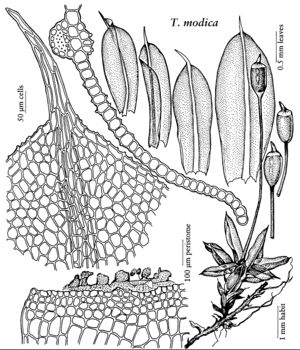Tortula modica
Bull. Buffalo Soc. Nat. Sci. 32: 226. 1993,.
Leaves obovate to spatulate, apex broadly acute or occasionally rounded, short-awned, margins weakly recurved proximally or occasionally plane, weakly bordered distally with 2–4 rows of slightly thicker-walled cells; costa excurrent, lacking an adaxial pad of cells, distally narrow, 2–3 cells across the convex adaxial surface; distal laminal cells irregularly hexagonal or sometimes rectangular, width 20–25 (–29) µm wide, 1 (–2):1, smooth or 1-papillose (best seen in section). Sexual condition autoicous. Sporophytes exerted. Seta 0.4–0.6 cm. Capsule stegocarpic, not systylius, short-cylindric, erect and nearly straight, urn 1–1.5 mm; peristome absent or rudimentary; operculum ca. 0.5 mm. Spores 30–35 µm, spheric, densely papillose.
Phenology: Capsules mature fall–spring.
Habitat: Calcareous soil, old fields, pastures, rocky areas
Elevation: low and moderate elevations
Distribution

Ont., N.Y., Pa., Europe, Asia, n Africa
Discussion
A report of Tortula modica from Mexico was excluded by R. H. Zander (1993). The distribution and characters of this uncommon species were discussed by H. A. Crum and L. E. Anderson (1981), P. M. Eckel (1987), and C. Williams (1966b). Essentially, Tortula modica is a high polyploid (n = 52) taxon distinguished from T. truncata by the larger habit, leaf margins usually recurved proximally, capsules slightly longer, short-cylindric, not tapering to the base, and peristome sometimes present though rudimentary.
Selected References
None.
Lower Taxa
"um" is not declared as a valid unit of measurement for this property.
